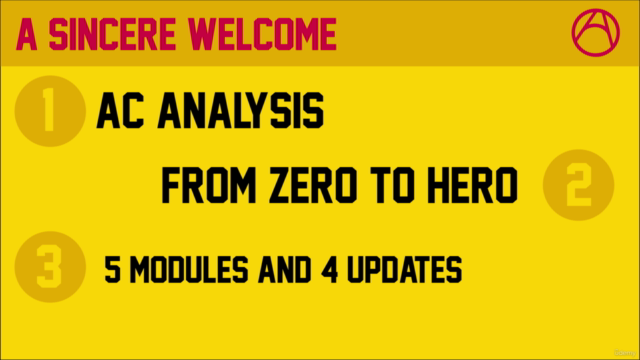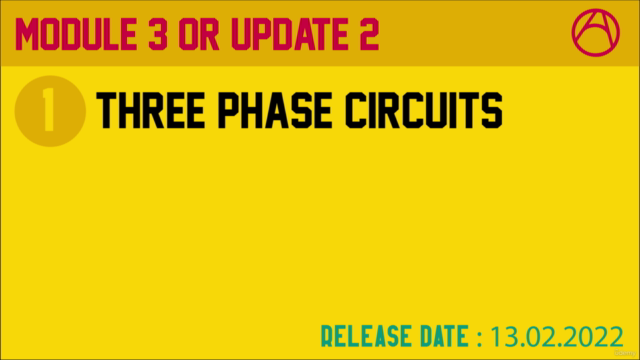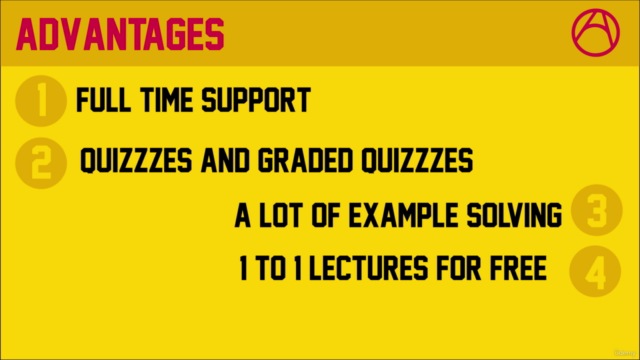AC (Alternating Current) Circuit Analysis

Why take this course?
🚀 [AC Circuit Analysis: Master the World of Alternating Currents] 🌐
Headline: 🎓 Be an expert of analyzing AC Circuits. This comprehensive course at Afterclap Academy will grant you a profound understanding of how alternating current (AC) circuits behave and interact. Dive into the fascinating world of AC analysis with confidence!
Course Overview:
Embark on a journey through the intricate realm of AC circuitry, where mathematics meets electromagnetism in a symphony of sinusoids, phasors, and power calculations. This course is meticulously structured to take you from the basics of AC analysis to the advanced concepts of frequency response. Let's break down what you'll learn along the way!
Module 1: Sinusoids and Phasors 📈
- Introduction: Gain an intuitive grasp of sinusoids, the fundamental waveforms in AC analysis.
- Sinusoids: Explore the mathematical representation of alternating current and how it oscillates over time.
- Phasors: Learn to represent complex sinusoidal waves in a static form for easy manipulation and analysis.
- Phasor Relationships with Circuit Elements: Understand how capacitors, inductors, resistors, and sources interact when represented as phasors.
- Impedance and Admittance: Discover the complex impedances and admittances that account for reactance and resistance in AC circuits.
- Kirchhoff's Laws for Frequency Domain: Apply Kirchhoff's laws to analyze the sum of voltages and currents in the frequency domain.
- Impedance Combinations: Master combining impedances in series and parallel configurations.
Module 2: Sinusoidal Steady State Analysis 🔁
- Nodal Analysis: Practice analyzing AC circuits using nodal analysis, a technique that examines the voltage at different nodes.
- Mesh Analysis: Learn to apply mesh analysis for solving AC circuits where currents form closed loops.
- Superposition: Understand how to break down complex AC circuits into simpler components using superposition theorem.
- Source Transformation: Transform various sources to a common type for easier circuit analysis.
- Thevenin and Norton Theorem: Convert any two-terminal network to an equivalent Thevenin or Norton circuit.
- Op Amp AC Analysis: Explore the role of operational amplifiers in AC circuits and their analysis.
Module 3: AC Power Analysis 💡
- Instantaneous and Average Power: Distinguish between instantaneous and average power in AC circuits and understand their implications.
- Maximum Average Power Transfer: Learn how to maximize the transfer of power from a source to a load.
- Effective or RMS Value: Comprehend the concept of effective or root mean square (RMS) value, crucial for calculating AC power.
- Appearent Power and Power Factor: Analyze the apparent power and its relationship with the actual power delivered in an AC circuit.
- Complex Power: Dive into the complex power domain to understand the phase relationship between voltage and current.
- Conservation of AC Power: Learn how power is conserved in AC circuits, despite the reactive components.
- Power Factor Correction: Discover techniques to correct the power factor for more efficient power usage.
Module 4: Three Phase Circuits 🌤️➡️🌤️➡️🌤️
- Balanced Three Phase Circuits: Understand the benefits of three-phase power systems over single-phase systems.
- Balanced Y-Y Connection: Learn the characteristics of a balanced Y-Y connected three-phase system.
- Balanced Y-D Connection: Explore the behavior of a three-phase system with a Y-Delta connection.
- Balanced D-D Connection: Analyze the performance of a Delta-Delta connected three-phase system.
- Balanced D-Y Connection: Investigate the interaction between Delta and Wye configurations in a balanced three-phase circuit.
- Power in Balanced Three-Phase Circuits: Calculate the power in a balanced three-phase system where all phases are equally loaded.
- Unbalanced Three-Phase Circuits: Learn how unbalanced conditions affect phase voltage, current, and power calculations.
Module 5: Frequency Response Analysis 🎶
- Frequency Domain Analysis: Shift your perspective to the frequency domain for a deeper understanding of AC circuit behavior.
- Resonance and Filter Circuits: Explore the concepts of resonance in AC circuits and how it affects filter designs.
- Transient and Steady State Response: Distinguish between transient and steady-state responses in AC circuits.
- Advanced Harmonic Analysis: Delve into the analysis of harmonic frequencies and their effects on circuit performance.
Why Take This Course?
- Real-World Applications: Learn practical skills applicable to electrical engineering, renewable energy systems, power distribution networks, and more.
- Interactive Learning: Engage with interactive simulations and real-world examples to solidify your understanding of AC circuitry.
- Expert Instructors: Benefit from the expertise of industry professionals who bring years of experience into a structured learning environment.
- Comprehensive Curriculum: Get a well-rounded education in AC theory, from fundamental concepts to advanced applications.
Enroll now and transform your knowledge of electrical circuits with Afterclap Academy's AC Circuit Analysis course! 🏫✨
Course Gallery




Loading charts...